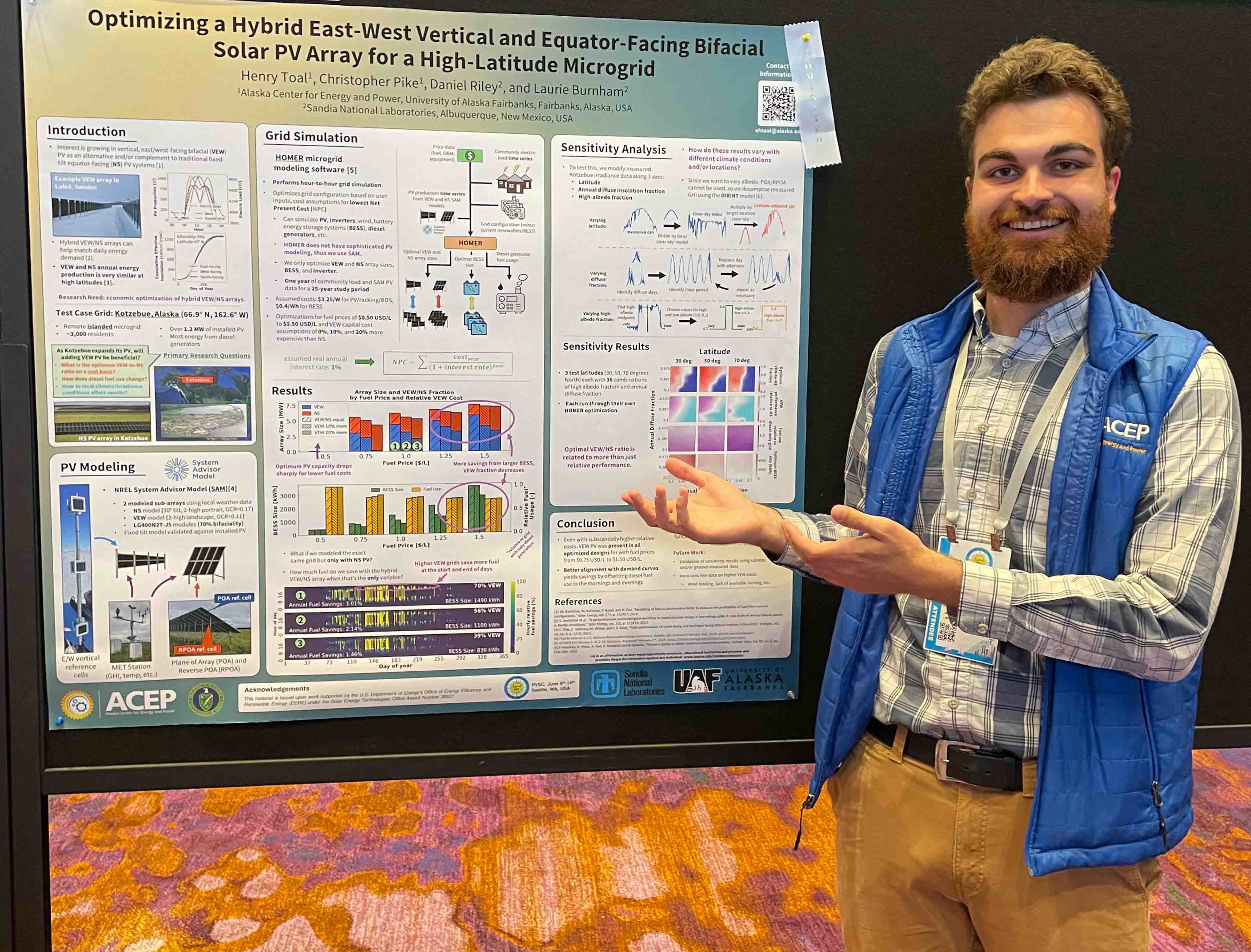ACEP nominated for best poster award at IEEE Solar Conference

Henry Toal presents a poster on solar PV optimization research conducted by ACEP and its collaborators.
June 28, 2024
A research poster presented by an ACEP researcher was nominated for the best poster award at a photovoltaic conference in June.
Henry Toal, a research engineer with ACEP’s Solar Technologies Program, gave a poster presentation at the 52nd annual Institute of Electrical and Electronics Engineers Photovoltaic Specialists Conference in Seattle.
The poster, “Optimizing a Hybrid East-West Vertical and Equator-Facing Bifacial Solar PV Array for a High-Latitude Microgrid,” covers research from an ongoing collaboration between ACEP, Sandia National Laboratories, Michigan Technological University and the University of Michigan, and is funded through the U.S. Department of Energy Solar Energy Technologies Office.
The team examined how orienting a portion of solar panels within an array to face east and west, instead of the standard south-facing orientation, could be beneficial by producing more energy in the mornings and evenings when it is needed most. The work focused on Kotzebue, Alaska as an example community and investigated the optimum ratio of the two orientations under different local fuel cost and weather scenarios. The study found that incorporating east/west-facing panels would reduce diesel fuel use and save costs even if they were more expensive than the traditional configuration.
Nominated for the best poster award in the Solar Resource and Forecasting category, the poster was very well received and generated a great deal of interesting discussion with fellow researchers.
“In Puerto Rico and Hawai‘i, researchers are working on integrating solar into small, isolated grids; in Canada and Scandinavia, they are looking at maximizing solar energy production at high latitudes; and in the Netherlands and Singapore, they are studying how to sustainably integrate solar with local ecosystems,” Toal explained.
“Events like PVSC let us share what has worked best for us, gather new ideas to test and plan for future collaborations more effectively,” he said.
The five-day conference featured oral and poster presentations by solar energy researchers and industry professionals from around the world on a wide array of topics, including the chemistry behind new experimental solar panel designs, techniques for more accurate mathematical modeling of solar power system performance, the economic outlook of the solar industry over the coming decades, and much more. The conference provided a valuable opportunity to learn from experts tackling similar solar-related challenges.
“A conference like PVSC is so valuable because people all around the world are working on the same problems as we are in Alaska,” Toal said.
Toal and co-authors are currently working on a full paper version of the research to be submitted for publication later this year.


